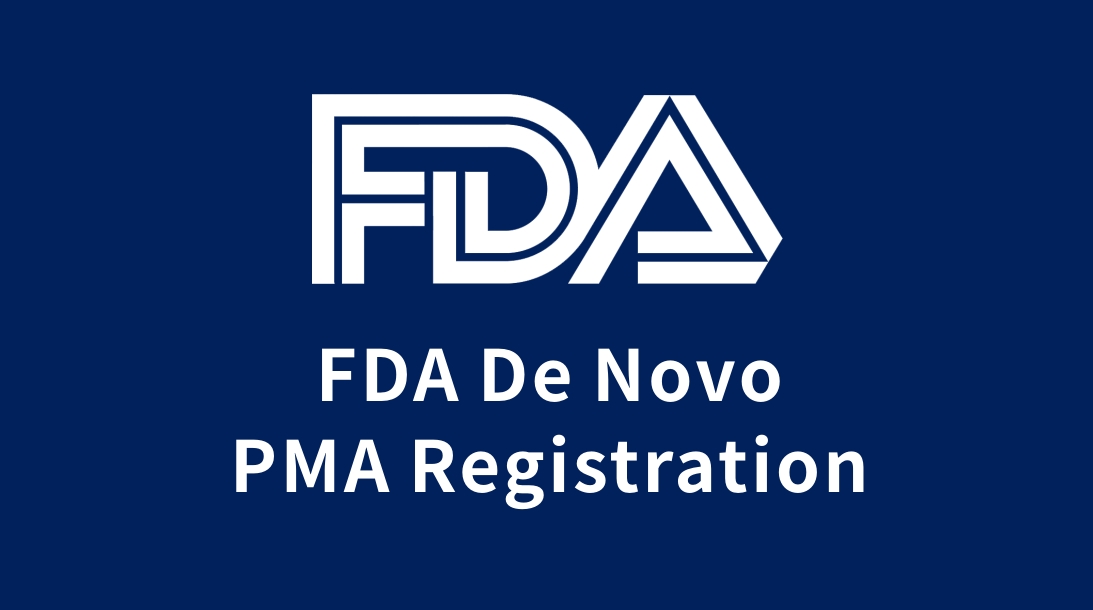FDA classification of medical devices
According to the different levels of risk that may be brought to patients or users in clinical application, the US FDA divides medical devices into three categories (I, II, III), of which class III risk level is the highest. For each medical device, the FDA clearly defines its product classification and management requirements.
Class I medical devices have the lowest risk (about 47%). Most of the products only need to register, list and implement GMP specifications, products can enter the U.S. market, of which very few products are exempt from GMP, and very few reserved products must submit a 510 (K) or a PMN (Premarket Notification) application to the FDA.
Class II medical devices carry a higher risk than Class I (about 46%), with varying degrees of harm to the human body or the user in the event of failure or problems, but it is not serious and does not lead to human life. More than half of Class II devices are subject to the PMN or 510(K) permit review process.
Class III medical devices bear the highest risk among the three classifications (about 7%) and are mostly life-sustaining, life-supporting or implanted devices that are potentially hazardous to patients and may cause injury or disease, such as cardiac pacemakers, intrauterine devices and incubators for infants. After registration and listing, enterprises are required to implement GMP and submit a Premarket Application (PMA) to the FDA (some Class III products are also PMN).
The 510(K) is intended to prove that the product is substantially equivalent to a legally marketed product. The purpose of PMA is to provide sufficient and valid evidence that a medical device is safe and effective for the intended use for which it was designed and manufactured. Currently, approximately 7% of Class I products, 92% of Class II products, and 80% of Class III products require 510(K); 20% of Class III products require a PMA application.
For Class I products, after the enterprise submits the relevant information to the FDA, the FDA only makes an announcement, and there is no relevant certificate to issue to the enterprise; For class II and III devices, companies must submit PMN or PMA, and at the same time, the FDA will give companies a formal market access approval letter (Clearance), that is, allow companies to directly sell their products in the U.S. medical device market in their own name. As for whether to conduct on-site GMP assessment in the application process, it is determined by the FDA based on a combination of factors such as product risk level, management requirements and market feedback.
De NOVO:
In the United States, for devices without legally marketed comparison products, even if they are low-to-medium risk, substantial equivalence cannot be established through the 510(k) application route to obtain marketing authorization. For these products, the FDA established the De Novo filing pathway many years ago to provide general or special controls on products to avoid filing under the highest category, Category III, and to reduce the burden on companies so that patients can receive safe and effective devices in a timely manner.
The De Novo pathway was added to the Food and Drug Administration Modernization Act (FDAMA) in 1997, To provide a new process for new low - to moderate-risk devices that receive a "non-substantial equivalent" (NSE) at the time of a premarket notification 510(K) application and are automatically classified as Class III, any company may submit a De Novo request to FDA within 30 days of receiving an NSE notification at the time of a 510(k) application. Devices are classified into Class I or Class II based on risk assessment.
July 9, 2012, Under Section 513 (f) (2) of the FD&C Act, as amended by the Food and Drug Administration Safety and Innovation Act (FDASIA), Chapter 607, If companies have determined that there is no marketed equivalent to their product, they can file a De Novo request directly with the FDA to classify the device into a Class I or Class II based on a risk assessment without first submitting a 510 (k) application.
Since the implementation of this application route, 235 devices have been marketed through this route, of which 170 have been marketed since 2012.
The new draft of the De Novo Classification Rule issued by FDA more transparently and effectively clarifies the requirements for submitting documents in this pathway and the process for FDA review. For example, the proposed regulations and requirements will provide structure, clarity, and transparency regarding the reclassification process, including requirements related to the format and content of reclassification requests. And the process and criteria for accepting, approving, rejecting and withdrawing reclassification requests. If finalized, it will help to properly classify new medical devices, allowing device developers to use this path to develop more novel devices.
The De Novo path enables more new devices to market that meet modern performance safety standards and can serve as a comparison product for substantial equivalence evaluation of the 510 (k) application path, benefiting the FDA's ongoing 510 (k) reform. At the same time, the FDA will also take a new approach to promote the use of more modern comparison products in the 510(k) path of substantial equivalence comparison process, thereby promoting more devices to use the De Novo path.
FDA PMA Application:
PMA applications can be divided into new PMA applications and PMA supplementary applications, in which a new PMA application refers to the applicant's application for a new product that has never been approved by the FDA, while a PMA supplementary application refers to the applicant's application before the applicant intends to change the safety and effectiveness of a product that has been approved by the PMA application.
FDA will notify the applicant in writing within 45 days of receipt of the application whether the application has been filed for review. If FDA refuses to file a case, it will notify the applicant in writing of the defects in the application and the reasons for refusing to file, and the applicant can choose to reapply according to the notice requiring additional information, or it can request a reconsideration or review; If the FDA decides to file for review, the written notice will include the citation number and filing date of the PMA and begin a 180-day review.
PMA application process is as follows:
Clinical trials of medical devices
In addition, for clinical trial results, 510 (K) applications are rarely required, and companies can decide whether to submit clinical data, and clinical reports are required for all PMA applications. All clinical studies from PMA must comply with the Investigational Device Exemption (IDE) specification. IDE requires manufacturers to obtain consent from the FDA or multiple agency review boards to conduct a study before initiating a clinical study. During the clinical study period, FDA has the authority to inspect and audit the clinical study unit and program implementation to ensure compliance with IDE specifications.
The contents of the IDE application include:
(1) Information of the initiator and the manufacturer;
(2) Device information;
(3) Preliminary research report;
(4) Research plan;
(5) Production information;
(6) Researcher information;
(7) Review the information of the Committee;
(8) Sales information;
(9) Labels;
(10) Informed consent;
(11) Environmental impact assessment, etc.
Clinical trials of medical devices can be divided into Feasibility study and Pivotal study. Feasibility study is similar to the phase I/II trial for a drug (also known as exploratory trial), which is mainly aimed at providing data support or proof of concept for the launch of the pivotal study. The selection range of clinical endpoint and sample size is relatively loose. The metrics of concern are primarily safety and potential effectiveness or benefit/risk ratio.
The Pivotal study is usually conducted after the Feasibility study and is the primary clinical support for the device to market. The main purpose of the design is to evaluate the safety and efficacy of the device, so how to choose the clinical endpoint and sample size is very critical. Randomization, blinding, and follow-up may be added at this stage. Accordingly, the FDA review process for the pivotal study will be more complex.
In general, clinical trials of devices consider more than one primary endpoint of safety and more than one primary endpoint of efficacy at the same time, and the clinical trial is considered a success when it is achieved at the same time. Of course, successful clinical trials may not be approved for marketing, such as the discovery of unexpected adverse events in the clinical course that are not "captured" by the primary clinical safety endpoint, or other clinical/preclinical data that contradicts the trial results.
Generally speaking, compared with drug clinical trials, the clinical scale of devices is often small, and it is difficult to meet the requirements of randomization, blindness, control, etc. The results may largely depend on the level of physicians, and the selection of clinical endpoints is relatively diverse. However, as with drugs, "safety and efficacy" is the key to the design and evaluation of clinical trials for devices.




